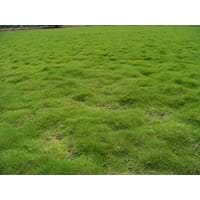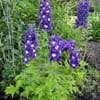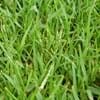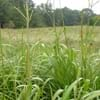Life Span
Perennial
Perennial
Type
Grass
Flowering Plants, Fruits, Trees
Origin
South-Eastern Asia, Asia
Central Asia
Types
Korean Lawngrass , Meyer Zoysiagrass , Manilagrass
Aceymac apple, Bailey Sweet apple, Dabinett apple, Nehou apple
Habitat
Lower slopes, Sandy stream banks
Hillside
USDA Hardiness Zone
8-11
5-8
Sunset Zone
H1, H2, 8, 9, 12, 13, 14, 15, 16, 17, 18, 19, 20, 21, 22, 23, 24
A1, A2, A3, 8, 9, 10, 11, 12, 13, 14, 15, 16, 17, 18, 19, 20, 21, 22, 23, 24
Habit
Clump-Forming
Oval or Rounded
Minimum Width
Not Available
Flower Color
Green, Light Green
White
Flower Color Modifier
Bicolor
Not Available
Fruit Color
Non Fruiting Plant
Green, Red
Leaf Color in Spring
Light Green, Dark Green
Dark Green
Leaf Color in Summer
Light Green
Green
Leaf Color in Fall
Green, Yellow green, Gold
Brown, Green, Light Yellow
Leaf Color in Winter
Gold, Tan
Not Available
Leaf Shape
Grass like
Oblong
Plant Season
Spring, Summer, Fall, Winter
Spring
Sunlight
Full Sun, Partial Sun
Full Sun, Partial shade
Growth Rate
Very Slow
Medium
Type of Soil
Loam, Sand
Loamy
The pH of Soil
Acidic, Neutral, Alkaline
Neutral
Soil Drainage
Average
Well drained
Bloom Time
Not Available
Fall, Summer
Tolerances
Drought, Salt, Soil Compaction
Drought
Where to Plant?
Ground
Ground
How to Plant?
Sod, Sprigging or Stolonizing
Grafting, Seedlings, Transplanting
Plant Maintenance
Medium
Medium
Watering Requirements
weekly regular
Medium
In Summer
Lots of watering
Lots of watering
In Spring
Moderate
Moderate
In Winter
Average Water
Average Water
Soil pH
Acidic, Neutral, Alkaline
Neutral
Soil Type
Loam, Sand
Loamy
Soil Drainage Capacity
Average
Well drained
Sun Exposure
Full Sun, Partial Sun
Full Sun, Partial shade
Pruning
Remove damaged leaves, Remove dead branches, Remove dead leaves
Prune when plant is dormant, Remove dead or diseased plant parts
Fertilizers
All-Purpose Liquid Fertilizer
All-Purpose Liquid Fertilizer
Pests and Diseases
Army-worms, sod webworms
Aphids, Canker, Caterpillars, Powdery mildew, Root rot
Plant Tolerance
Drought
Drought
Flowers
Insignificant
Yes
Flower Petal Number
Single
Single
Foliage Texture
Fine
Medium
Foliage Sheen
Matte
Matte
Allergy
Not Defined
Mouth itching, Throat itching
Aesthetic Uses
Beautification, Cottage Garden, Farmland, Ground Cover, Landscape Designing
Not Used For Aesthetic Purpose
Beauty Benefits
Not Available
Not Available
Environmental Uses
Provides ground cover, soil erosion prevension on hill slopes
Air purification
Medicinal Uses
Unknown
Cancer, constipation, Diabetes, Diarrhea, Dysentry, Fever, Heart problems, Tooth ache
Part of Plant Used
Whole plant
Fruits
Other Uses
Used as a golf course turf
Used As Food, Wood is used for making furniture
Used As Indoor Plant
Insignificant
No
Used As Outdoor Plant
Yes
Yes
Garden Design
Container, Edging, Groundcover, Lawns and Turf, Mixed Border, Rock Garden / Wall, Tropical
Fruit / Fruit Tree, Shade Trees, Showy Tree
Botanical Name
ZOYSIA tenuifolia
Malus domestica
Common Name
Korean Velvet Grass
Apple Tree
In Hindi
कोरियाई मखमल घास
सेब का वृक्ष
In German
Korean Samt Gras
Apfelbaum
In French
herbe de velours coréenne
Pommier
In Spanish
hierba de terciopelo de Corea
Manzano
In Greek
hierba de terciopelo de Corea
μηλιά
In Portuguese
grama de veludo coreano
Macieira
In Polish
Not Available
jabłoń
In Latin
Carl herba
Arbore
Phylum
Angiosperms
Magnoliophyta
Class
Monocotyledonae
Magnoliopsida
Clade
Commelinids
Angiosperms, Eudicots, Rosids
Tribe
Cynodonteae
Not Available
Subfamily
Chloridoideae
Not Available
Number of Species
Not Available
Importance of Korean Velvet Grass and Apple Tree
Want to have the most appropriate plant for your garden? You might want to know the importance of Korean Velvet Grass and Apple Tree. Basically, these two plants vary in many aspects. Compare Korean Velvet Grass and Apple Tree as they differ in many characteristics such as their life, care, benefits, facts, etc. Every gardener must at least have the slightest clue about the plants he wants to plant in his garden. Compare their benefits, which differ in many ways like facts and uses. The medicinal use of Korean Velvet Grass is Unknown whereas of Apple Tree is Cancer, constipation, Diabetes, Diarrhea, Dysentry, Fever, Heart problems and Tooth ache. Korean Velvet Grass has beauty benefits as follows: Not Available while Apple Tree has beauty benefits as follows: Not Available.
Compare Facts of Korean Velvet Grass vs Apple Tree
How to choose the best garden plant for your garden depending upon its facts? Here garden plant comparison will help you to solve this query. Compare the facts of Korean Velvet Grass vs Apple Tree and know which one to choose. As garden plants have benefits and other uses, allergy is also a major drawback of plants for some people. Allergic reactions of Korean Velvet Grass are Not Defined whereas of Apple Tree have Mouth itching and Throat itching respectively. Having a fruit bearing plant in your garden can be a plus point of your garden. Korean Velvet Grass has no showy fruits and Apple Tree has showy fruits. Also Korean Velvet Grass is not flowering and Apple Tree is flowering. You can compare Korean Velvet Grass and Apple Tree facts and facts of other plants too.





